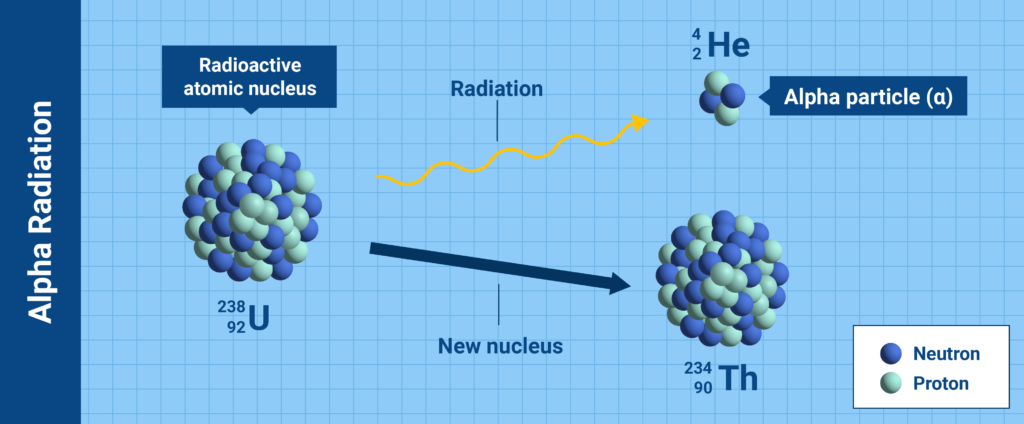Radiation, a phenomenon that permeates our environment, holds both beneficial and potentially harmful effects. Understanding its nature is crucial for those seeking to navigate the intricate web of its presence.
This article aims to explore the different types and sources of radiation Lead glass radiation, delve into its impacts on living organisms, shed light on methods used to measure radiation exposure, and present protective measures to mitigate potential harm.
By equipping you with this knowledge, we aim to empower you to make informed decisions regarding radiation’s presence in your daily life.

Types of Radiation
There are several distinct types of radiation that are commonly encountered in various scientific and medical fields.
One type of radiation is electromagnetic radiation, which includes gamma rays, X-rays, ultraviolet (UV) rays, visible light, infrared radiation, microwaves, and radio waves.
Another type is ionizing radiation, which has enough energy to remove tightly bound electrons from atoms, creating ions. This includes alpha particles, beta particles, and neutrons.
Radiation therapy, a common medical application Lead brick, uses ionizing radiation to target and kill cancer cells.
On the other hand, nuclear accidents, such as those at Chernobyl and Fukushima, release large amounts of ionizing radiation, leading to significant health and environmental consequences.
Understanding the different types of radiation is crucial for the safe use of radiation therapy and for managing the risks associated with nuclear accidents.
Sources of Radiation
The sources of radiation can be categorized into natural sources and artificial sources.
Natural sources of radiation include cosmic rays and radioactive materials in the earth’s crust. Cosmic rays originate from outer space and can penetrate the Earth’s atmosphere. They can have harmful effects on living organisms when exposed to high levels of radiation. Radioactive materials, such as uranium and radon, are naturally present in the Earth’s crust. These materials can emit radiation and pose a risk to human health.
Artificial sources of radiation include medical imaging techniques and nuclear power plants. Medical imaging techniques, such as X-rays and CT scans, use ionizing radiation to create images of the body. While these techniques are valuable in diagnosing and treating diseases, they also expose patients to radiation. Nuclear power plants generate electricity by harnessing the energy of nuclear reactions. These reactions produce radiation as a byproduct, which must be carefully managed and controlled.
In addition to medical imaging and nuclear power plants, radiation therapy is another artificial source of radiation. Radiation therapy is commonly used in the treatment of cancer to kill cancer cells. It involves targeting tumors with high doses of radiation to destroy the cancer cells while minimizing damage to healthy cells.
Furthermore, in space exploration, astronauts are exposed to high levels of radiation. Cosmic rays and solar flares can have detrimental effects on their health. Protective measures, such as shielding and monitoring devices, are implemented to minimize the risks associated with radiation exposure in space.
Effects of Radiation on Living Organisms
Exposure to radiation can have significant impacts on the health and well-being of living organisms. This includes genetic mutations, tissue damage, and an increased risk of developing cancer. The effects of radiation depend on various factors such as the dose, duration of exposure, and the type of radiation.
Radiation therapy is a medical treatment that uses high-energy radiation to target and destroy cancer cells. While it can be effective in treating cancer, radiation therapy also carries potential risks. These risks include damage to healthy cells and tissues surrounding the tumor.
Acute or high doses of radiation can cause radiation sickness. This condition manifests as symptoms like nausea, vomiting, and fatigue. Long-term exposure to low doses of radiation can lead to the development of cancerous cells and other chronic health conditions.
Given these risks, it is crucial to carefully manage and monitor radiation exposure. This helps minimize its detrimental effects on living organisms.

Measuring Radiation Exposure
When measuring radiation exposure, it is important to consider factors such as the type of radiation, dose rate, and duration of exposure. Radiation detection plays a critical role in ensuring radiation safety.
There are various devices and techniques used for radiation detection, such as Geiger-Muller counters, scintillation detectors, and dosimeters. These instruments can measure the intensity and type of radiation present in an environment.
Additionally, radiation safety protocols require regular monitoring to ensure that radiation exposure remains within permissible limits. This involves periodically assessing radiation levels in work areas and implementing appropriate safety measures.
Understanding the type and characteristics of radiation, along with the dose rate and duration of exposure, is essential for accurately measuring radiation exposure and maintaining a safe environment.
Protective Measures Against Radiation
Implementing effective protective measures is crucial in minimizing the risks associated with radiation and ensuring the safety of individuals in radiation-prone environments. Radiation shielding is a key component of these protective measures.
Shielding materials, such as lead or concrete, are used to absorb or block radiation, reducing the amount that reaches individuals. In radiation therapy, for example, lead aprons and shields are used to protect healthcare providers from exposure to the patient’s radiation beams.
Additionally, proper training and adherence to safety protocols are essential in minimizing radiation risks. This includes using appropriate personal protective equipment, maintaining a safe distance from radiation sources, and following strict decontamination procedures.
Regular monitoring and assessment of radiation levels are also important to ensure compliance with safety regulations and to promptly address any potential risks.
Conclusion
In conclusion, radiation refers to the emission or transmission of energy in the form of electromagnetic waves or particles.
It can be classified into ionizing and non-ionizing radiation, with various sources such as nuclear power plants, X-rays, and sunlight.
Exposure to radiation can have detrimental effects on living organisms, including DNA damage and increased risk of cancer.
To measure radiation exposure, various methods are employed, and protective measures are crucial to minimize the potential harm caused by radiation.

